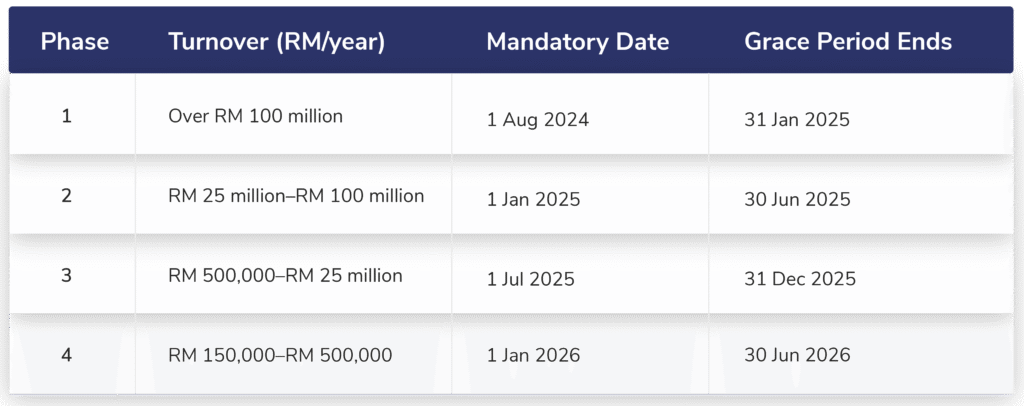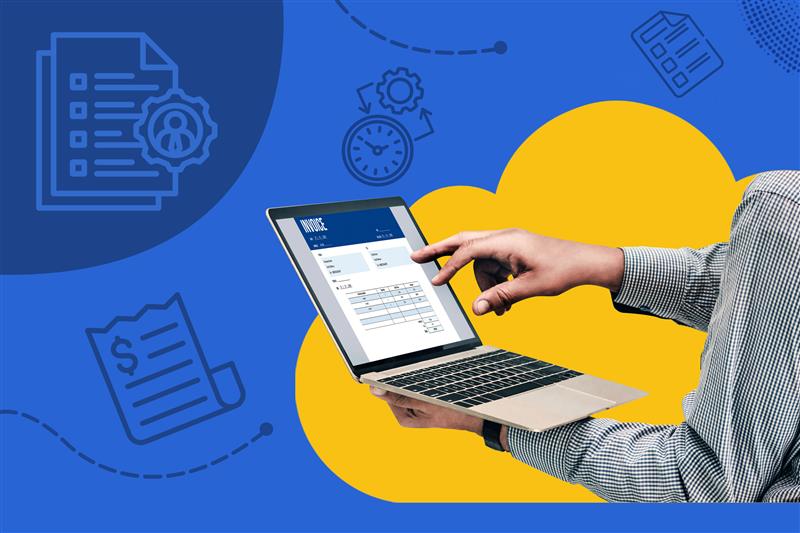What if: instead of printing invoices, sticking on stamps, or sending them by courier, you issue an invoice digitally—it gets a QR code, is instantly approved by the tax authority, and lands in your customer’s inbox with no fuss. That’s Malaysia’s new E-Invoicing system. It’s rolling out now, and by mid-2025, most businesses will need to use it.
This guide is for you—busy business owner or new entrepreneur—who wants to understand what’s happening and why it matters. We’ll avoid jargon and keep it simple.
What Exactly Is E-Invoicing?
An E‑Invoice is simply a regular invoice but done digitally. Instead of PDF or paper, it’s a structured digital file (like XML or JSON) that includes all the usual details—invoice number, date, items, prices, buyer, seller, and more.
In Malaysia, this digital invoice gets uploaded to a central tax system called MyInvois. The system checks it, assigns a unique code, adds a QR stamp, and approves it—then you send it to your customer. This is called the Clearance Model.
Why Go digital With E-Invoicing?
- Stops invoice tampering and tax evasion
- Cuts down mistakes (no manual entry needed)
- Speeds up invoicing and payments
- Makes tax audits smoother
Who Needs to Do E-Invoicing — and When?
Not everyone starts at once. The IRB is introducing it in phases based on how much turnover your business makes per year:

If you make less than RM 150,000 a year, you’re exempt—for now. You can choose to use it voluntarily, but it’s not required yet.
Five-Month Grace Period—How It Helps
Right after your phase start date, the IRB gives you time to adjust—called the grace period. Instead of issuing a real-time E‑Invoice for every sale, you can submit one monthly invoice that covers all your transactions. That takes the pressure off temporarily.
During this time, no penalties are enforced as long as you issue that consolidated (monthly) invoice. But once the grace period ends, real-time submission is expected. If you don’t comply, you face:
- RM 200 to RM 20,000 fines for each invoice
- Possible jail time up to six months
- Or both
What Goes Inside an E‑Invoice?
i) Sending an E‑Invoice isn’t just emailing a PDF. You need certain technical details:
Must be in UBL 2.1 format (XML or JSON)
ii) Include:
- Seller & buyer info (name, tax ID, address)
- Invoice number and date
- Details for each item—descriptions, quantities, prices, and tax
- Payment total
iii) Must have a digital signature and unique ID
iv) Must include a QR code for verification
Once uploaded, the IRB approves it and you can send it to customers as proof of a valid invoice.
How to Submit: Two Easy Ways
You have two main ways to submit your invoices:
A) MyInvois Portal
- Free from the government
- Ideal for small businesses or low volume
- Upload invoices one by one or in batches with spreadsheets
- User-friendly dashboard
B) API Integration
- Best for medium and large businesses
- Connects your accounting software or ERP directly with MyInvois
- Streamlines the process—no manual uploads
- Requires IT setup and effort initially
Choose the portal if you’re small, go for API if you’re growing fast.
Keep & Store for Seven Years
The IRB requires you to keep all validated E-Invoices for seven years—that means safe, searchable digital files.
This also helps during tax audits—no more digging through paper files.
If You Don’t Comply…
Once your grace period is over, failing to issue valid E-Invoices can cost you:
- RM 200–20,000 per invoice
- Up to six months jail time
- Or both
Even if you used the grace period but didn’t file that consolidated invoice, you can still be penalised.
Bottom line: don’t delay—comply early.
Why It’s Actually Good for You
It’s easy to see E-Invoicing as just more work—but it brings real benefits:
- Faster invoicing, quicker payments
- Lower costs—no printing, postage, or storage
- Fewer mistakes from manual data entry
- Better financial insights—your records feed directly into accounting systems
- Audit-safe—authenticated and secure invoices reduce risk
Businesses with the right software often recover their investment in months.
What Can Go Wrong—and How to Prevent It
Potential issues:
- Old accounting systems might not support XML/JSON or QRs
- Once issued, you can’t edit an invoice—need credit notes
- Staff unfamiliar with the new system may make errors
Tips to handle it:
- Run a pilot before the full go-live date
- Create clear step-by-step guides for your finance team
- Train employees early
- Keep backup plans—for example, credit-note templates
Help from the Government
The IRB wants this to succeed—so they provide:
- A free portal and sandbox environment for testing
- SDKs and guides for API integration
- Incentives for early adopters:
- Reduced capital allowance period (write off tech faster)
- Tax deductions, up to RM 50,000/year for related expenses (2024–2027)
- Reduced capital allowance period (write off tech faster)
Some SMEs can also claim grants to help with implementation.
Your Simple E-Invoicing Checklist
- Find your phase: See your turnover in the table above
- Pick your method: Portal if small, API if bigger
- Check your systems: Can they handle XML/JSON and QR codes?
- Pilot test: Try it out before full launch
- Train your team: Make sure they’ve hands-on knowledge
- Use grace period: File that monthly consolidated invoice
- Monitor performance: Look for errors or failed submissions
- Use incentives: Offset your costs via tax and grants
Wrapping Up
E-Invoicing in Malaysia may sound like a big change, but it’s part of the country’s digital future. By July 2025, almost all businesses—even small ones—will need to comply. The good news? With the right tools and preparation, it becomes faster, cheaper, and safer.
InfoTech’s HR & Accounting Software supports full MyInvois and API integration, so if you’re ready to make the leap—or just want to explore your options—contact us for a free demo today!
Yes, E-Invoicing will soon be required for most Malaysian businesses. Yes, it needs some setup. And yes, it comes with penalties. But mostly—it’s an opportunity to modernize your business, streamline operations, and stay audit ready for years to come.
